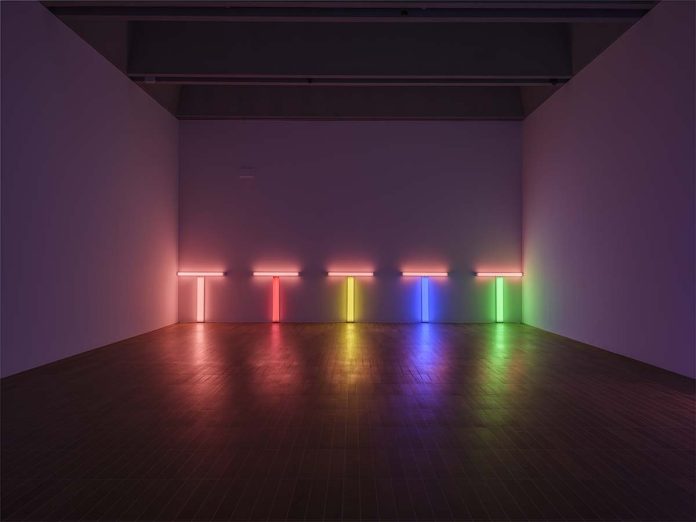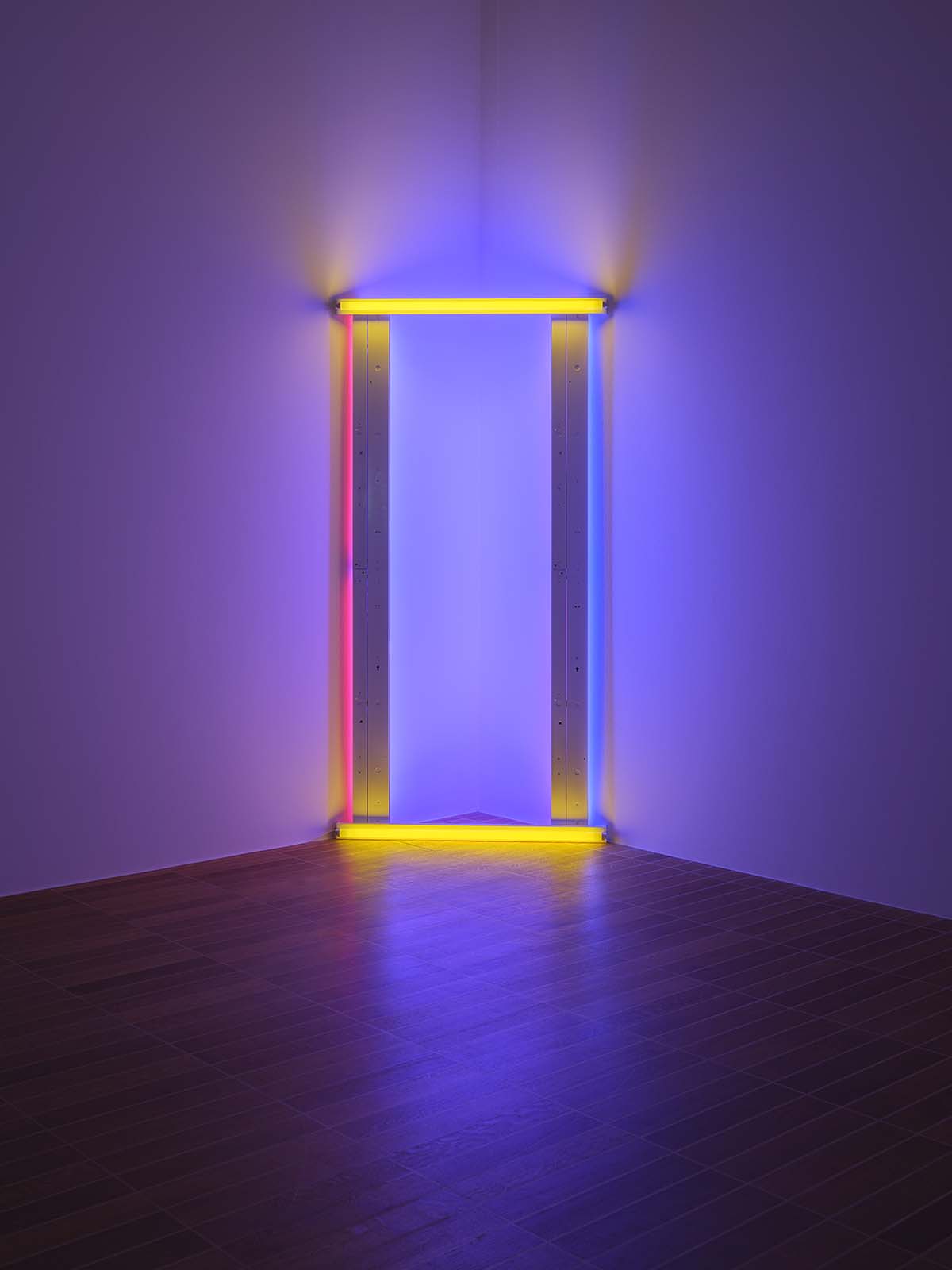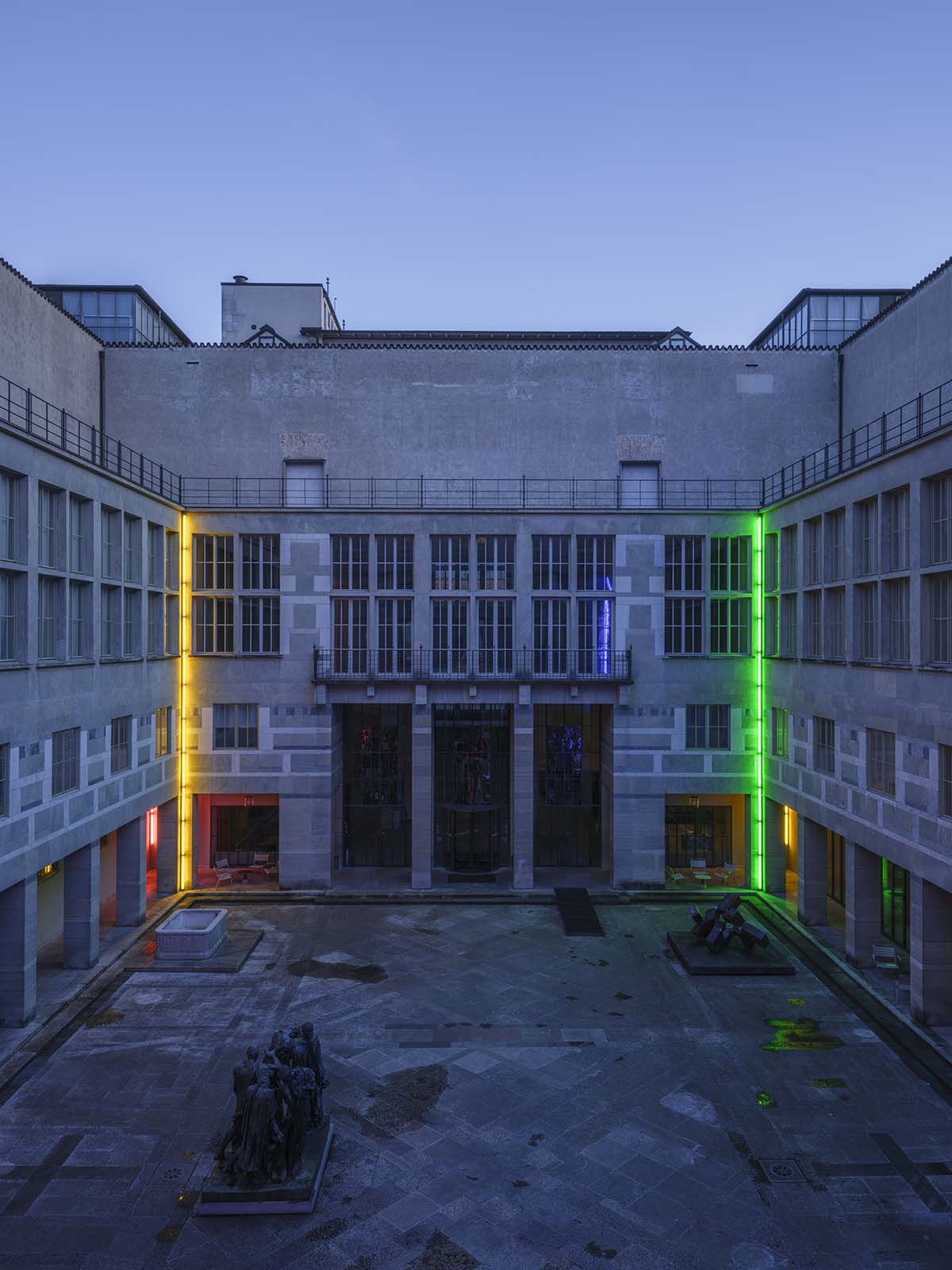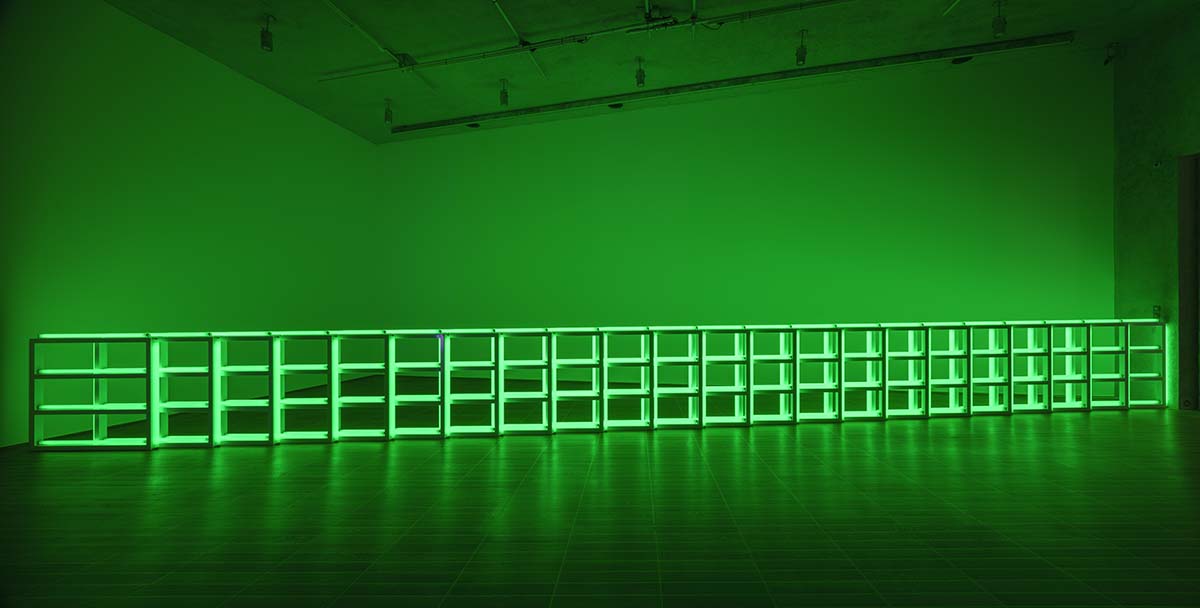
The Kunstmuseum Basel dedicates an extensive exhibition to a pioneer of Minimal Art: the American artist Dan Flavin (1933–1996) rose to fame in the early 1960s with his work with industrially manufactured fluorescent tubes. Bringing together thirty-five light installations, twenty-one works on paper, two early paintings by Flavin that are rarely displayed, and a selection from the works by Urs Graf that Flavin chose for his presentation at the Kunstmuseum Basel in 1975, the exhibition presents a thematically as well as chronologically organized survey of Flavin’s singular oeuvre, with a focus on works he dedicated to individuals or events.

The Dan Flavin Estate, Courtesy David Zwirner
Dan Flavin made history by creating a new art form. His works made of light extricated
color from the context of painting and transposed it into three-dimensional space with a
limited palette of colors—blue, green, red, pink, yellow, ultraviolet, and four different
shades of white—predetermined by the technology. Using commercially available light
fixtures, he defied conventional ideas about authorship and processes of art production.


The earliest exhibitions of Flavin’s fluorescent lamps in New York left artists and critics
thrilled by his purism, the fascination of his “gaseous images” (a term the artist himself
liked to use), and the physical immediacy of their glowing presence. In the course of his
career, single tubes and simple geometric arrangements evolved into complex
architectonic works and elaborate multipart series.

2 marzo-18 agosto, 2024 – Photo © Florian Holzherr






